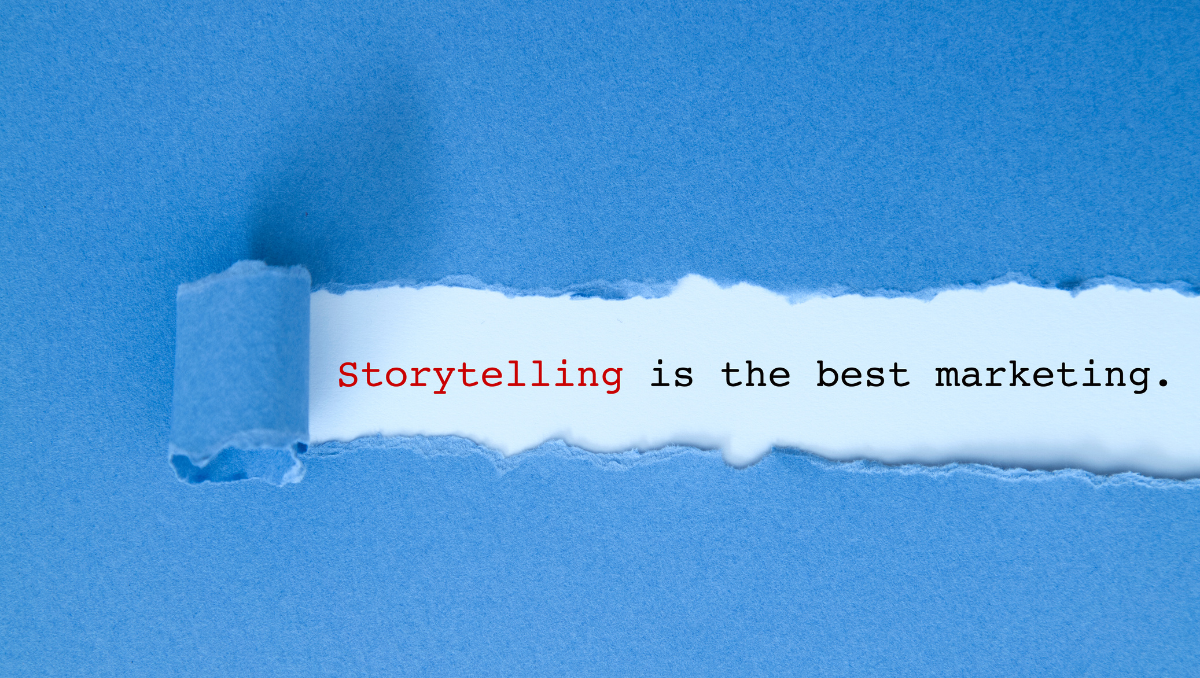Content is King has covered everything from television to today’s digital marketing landscape. There is a reason that content is still king! But not just any content—the most successful brands are using storytelling to connect with their audience on a deeper level. As consumers, we’re constantly bombarded with information, and it’s the stories behind a brand or product that cut through the noise and capture attention. Whether you’re a small business or an industry leader, storytelling can transform your content marketing efforts and take your brand to new heights.
There’s a reason that at In Plain Sight Marketing we tell big stories for small businesses. Storytelling is our bread and butter, one of the things we do best. When it comes to telling your own story, figuring out where to start can be the hardest part. Let’s dive in to see why storytelling is important and how you can start telling your story for your business.
Why Storytelling Matters in Content Marketing
It Makes Your Brand Relatable: Faceless corporations, self-checkout and automated customer service make people crave personal connections. Storytelling helps humanize your brand, making it more relatable and approachable. Sharing the journey of how your business started, the values that drive your company, creating real-time content with employees, or the experiences of real customers can make your brand feel more authentic. People buy from people they trust, and this emotional connection builds that trust and loyalty with your audience, which is essential for long-term success.
It Simplifies Complex Concepts: Offering a technical product or service can be challenging to explain the value in a way that resonates with your audience. Storytelling allows you to break down complex ideas into simple, relatable narratives. By putting your product or service into a real-world context, you help your audience understand why it matters and how it can solve their problems.
It Captures Attention: Stories are naturally engaging. From childhood, we’re drawn to narratives that make us feel something—whether it’s excitement, empathy, or inspiration. In content marketing, stories hold the power to capture attention and keep your audience invested. Instead of just listing features and benefits, tell a story about how your product changed someone’s life, or share a behind-the-scenes moment that shows the heart of your brand. This keeps your audience engaged and interested in what you have to say.
It Sets You Apart from Competitors: It is essential to differentiate your brand from competitors in a saturated market. Your story is unique—no one else has the exact same journey, experiences, or perspective. By leveraging storytelling, you can showcase what makes your brand different. Whether it’s your company culture, your founders’ vision, or your commitment to social causes, storytelling allows you to highlight your unique identity in a compelling way.
It Encourages Audience Action: A well-told story doesn’t just entertain—it inspires action. When you weave storytelling into your content, it becomes easier to guide your audience through their buyer’s journey. By connecting with them emotionally and providing value, you build trust and motivate them to take the next step, whether that’s making a purchase, signing up for your newsletter, or following your brand on social media.
How to Use Storytelling in Your Content Marketing
Define Your Brand’s Core Story: Every brand has a story. It might be the journey of how your company was founded, the mission that drives your team, or the impact you want to make in the world. Defining your brand’s core story will serve as the foundation for your content marketing strategy. This story should reflect your values, goals, and unique selling points. Keep it simple, authentic, and relatable.
Highlight Your Customers’ Stories: One of the most powerful ways to use storytelling is by highlighting your customers’ experiences. Sharing case studies, testimonials, or user-generated content allows potential customers to see real-world examples of how your product or service has made a difference. These stories add credibility and show that your brand delivers on its promises.
Use Visual Storytelling: Content marketing isn’t limited to text. Visual storytelling through photos, videos, and graphics can have a huge impact on your audience. Behind-the-scenes videos, product demonstrations, and even Instagram stories can help you tell your brand’s narrative in a more engaging and dynamic way. Visual content is often more shareable, increasing your brand’s reach. Don’t be afraid to make silly little videos- sometimes these are the best content you can create!
Create Consistent Narratives Across Platforms: Your storytelling should be consistent across all platforms—whether it’s your website, blog, social media, or email campaigns. Develop key themes and messages that align with your brand story and use them consistently to reinforce your identity. A cohesive story makes it easier for your audience to recognize and connect with your brand, no matter where they encounter it.
Appeal to Emotions: At the heart of great storytelling is emotion. Don’t just focus on selling a product—tell stories that tap into your audience’s feelings, aspirations, and challenges. Whether you want to make them feel inspired, motivated, or empathetic, emotional stories are more memorable and likely to leave a lasting impact.
Storytelling is the secret ingredient that can take your content marketing from good to great. By crafting relatable, engaging, and emotional narratives, you can build stronger connections with your audience, stand out from the competition, and inspire action. Remember, your brand has a story worth telling—and when you share it effectively, you’ll see the results in stronger brand loyalty, increased engagement, and ultimately, business growth!
Are you struggling with getting started? Schedule a call with us today – we’d love to help you tell your story!

